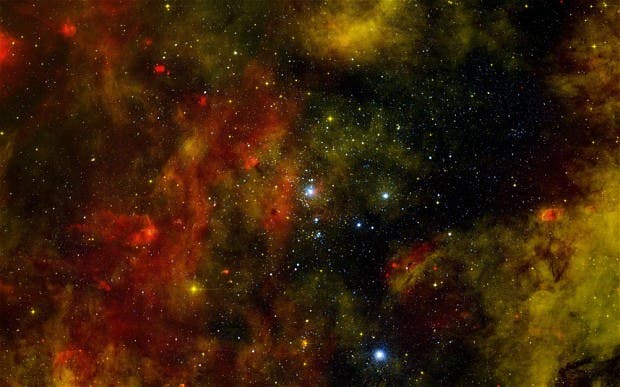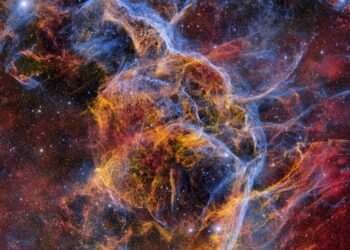
Scientists with the Sloan Digital Sky Survey (SDSS-II) have used a novel technique to peer through the nature of dark energy as far as ten billion years ago and measure the three-dimensional structure of the distant Universe. Tracing this 3-D map scientists were able to assess the influence of dark energy over time, which might help unravel the mysteries of this repulsive force.
For the past five billion years, the Universe expansion rate has been speeding up, a phenomenon attributed to dark energy by astronomers. In the early phase of the Universe, however, a few billion years after the Big Bang, this mysterious force did not have a dominant role as gravity actually held sway, decelerating cosmic expansion.
“We know very little about dark energy but one of our ideas is that it is a property of space itself – when you have more space, you have more energy,” explained Dr Matthew Pieri, a BOSS team-member.
“So, dark energy is something that increases with time. As the Universe expands, it gives us more space and therefore more energy, and at some point dark energy takes over from gravity to end the deceleration and drive an acceleration,” the Portsmouth University, UK, researcher said.
The new measurement is based on data from the Baryon Oscillation Spectroscopic Survey (BOSS), one of the four surveys that make up SDSS-III, gathered using a novel technique called “baryon acoustic oscillations” (BAO). This technique uses small variations in matter left over from the early Universe as a “standard ruler” to compare the size of the Universe at various points in its history.
In order for this technique to work, scientists had to study very distant objects. However, very distant objects, like ancient, far away galaxies are faint and difficult to survey, so the astronomers decided to look after quasars, one of the most energetic objects in the Universe, to map the spread of hydrogen gas clouds in space.
Before the quasars’ electromagnetic radiation emissions reach Earth, they encounter clouds of hydrogen. Part of the light becomes thus absorbed, and the pattern of absorption betrays how the density of gas varies with distance along the line of sight to the telescope.
Measuring this absorption – a phenomenon known as the Lyman-alpha Forest – yields a detailed picture of the gas between us and the quasar.
“It’s a cool technique, because we’re essentially measuring the shadows cast by gas along a single line billions of light-years long,” says Anze Slosar of Brookhaven National Laboratory.
“The tricky part is combining all those one-dimensional maps into a three-dimensional map. It’s like trying to see a picture that’s been painted on the quills of a porcupine.”
Last year, the team of astronomers used data from 10,000 quasars gathered by the SDSS-III’s Baryon Oscillation Spectroscopic Survey (BOSS) to make the first large-scale map of the structure of the faraway “Lyman-alpha forest” gas. However, the resolution wasn’t high enough to detect the subtle variation of baryon acoustic oscillations. Now in their latest survey, the scientists build a map of 50,000 quasars that shows the distribution of hydrogen gas clouds reaching 11 billion light-years away – just two billion years after the Big Bang itself.
Universe expansion is like a roller coaster ride
“If we think of the Universe as a roller coaster, then today we are rushing downhill, gaining speed as we go,” says Nicolas Busca of the Laboratoire Astroparticule et Cosmologie of the French Centre National de la Recherche Scientifique (CNRS), one of the lead authors of the study.
“Our new measurement tells us about the time when the Universe was climbing the hill – still being slowed by gravity.”
Equipped with this high detail map of BAOs, the scientists were able to paint a picture of how the Universe evolved through out history. For the first time, we see how dark energy worked at a time before the Universe’s current acceleration started.
The BOSS findings show that the expansion of the Universe slowed down some 11 billion years ago as a tug of war ensued between the attractive gravitational forces of galaxies. As the Universe continued to expand, the constant repulsive force of dark energy began to dominate as matter was diluted by the expansion of space. This is consistent with current Universe expansion theories.
“No technique has ever been able to probe this ancient era before,” says BOSS principal investigator David Schlegel of the Lawrence Berkeley National Laboratory.
“Back then, the expansion of the Universe was slowing down; today, it’s speeding up. How dark energy caused the transition from deceleration to acceleration is one of the most challenging questions in cosmology.
More than eighty years since Edwin Hubble and Georges Lemaitre first measured the expansion rate of the nearby Universe, the SDSS-III has made the same measurement of the expansion rate of the Universe 11 billion years ago. Currently, the BOSS project is only completed by a third. In the few years, scientists plan to map the locations of a million-and-a-half galaxies and more than 160,000 quasars. By the time SDSS-III is complete, it will have helped transform the Lyman-alpha forest technique from a risky idea into a standard method by which astronomers explore the nature of the faraway Universe, the authors involved in the study claim .
Findings were published in the journal Astronomy and Astrophysics.






